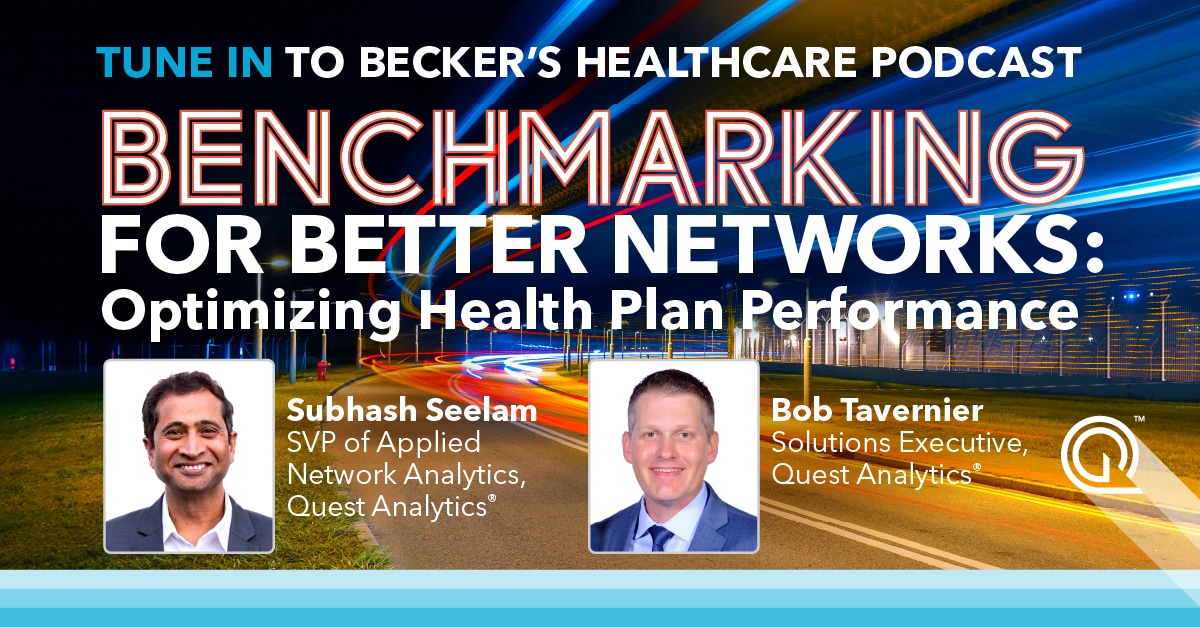Reprinted from The URAC Report.
Nearly two months ago now CMS finalized changes to Medicare Advantage (MA) and Part D for 2021 and while I previously covered the new telehealth network adequacy provisions, I’ve been meaning to do a deeper dive into how network adequacy as a whole has changed in recent years.
To do this, I reached out to Cari Lee, Vice President of Government Affairs, at Quest Analytics. This organization has been around for over 30 years and just so happens to be well versed in all things network adequacy. I had the pleasure of interviewing Cari a couple weeks ago now (virtually of course) and an excerpt of our conversation is below.
So, Cari, how has the practice of network adequacy changed over the last 10-20 years?
“In the early days of network adequacy reviews, the process was designed to ensure simplicity and convenience on the part of access for the member seeking health care. Initially, this was performed by producing a map and visually determining if there were enough dots (AKA access points to care) on a map. Then, this evolved to incorporate evaluations that were limited to looking at either time or distance [standards]”.
URAC is quite familiar with network adequacy given our history in health plan and health network management. And, while wanting to make sure there are a minimum number of providers within a certain mile and/or minute range makes sense, I’ve often wondered how this translated to better care, if at all?
In response, Cari noted that “these earlier reviews offered minimal consumer protection in determining if there was appropriate network access. They didn’t take into consideration the ratio of providers to members or if plans were creating discriminatory networks by excluding certain provider specialties, such as oncology or behavioral health.”
Not surprisingly, we’ve seen regulators start to allow for new innovations and considerations to network adequacy to update the more antiquated time and distance approach. At URAC, we believe that it is far more important to have a process in place to continually assess a provider network against factors such as community need, provider quality, impact of provider directory inaccuracies, to name just a few, rather than only focusing on having a specified number of providers within X miles at a single point in time. This resembles an approach offered through Quest Analytics’ provider network management platform – Quest Enterprise Services.
Now while most health plans already use some type of network management tool, the onset of COVID-19 created a new challenge to maintaining an adequate network due to stay-at-home orders being issued. As such, we saw a marked increase in telehealth that coincided with the relaxation of long-standing restrictions in Medicare policy. And, given that contracting with telehealth providers is now incentivized in Medicare Advantage, one can only wonder how far off CMS is from allowing the availability of telehealth providers to satisfy network adequacy requirements. I want to be clear that while I am a strong supporter of telehealth, I wholeheartedly believe that it should not replace in-person visits for individuals who prefer to have care in person.
Furthermore, the uptick in the use of telehealth providers does introduce some quality concerns for me. We can very easily determine the quality of care delivered in person, but what constitutes a high-quality virtual visit? I’ll save my answer for that in a future post because I myself have several thoughts but in the meantime, back to close out my interview with Cari.
The last question I asked Cari was “what is the most important component of network adequacy?”
“Well, the most important component of network adequacy has always been ensuring consumers have access to care. What I think has been missing is a holistic view of provider network management.” She continued, “as a former insurance regulator, I recognize that it is critical that payers not only demonstrate but are able to ensure to regulators and their members a commitment to patient access – whether that’s through in-office visits or via telehealth. That means payers should be able to show how they are frequently measuring, managing and monitoring access to care within their networks. Bottom line, if we don’t measure, score and monitor the networks over time, how can we ever expect them to improve?”
I for one couldn’t agree more.
Be sure to check out Quest Analytics online and connect with them on LinkedIn and Twitter.








